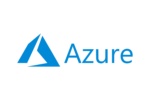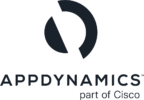An ever-increasing number of enterprises are moving their storage and data processing needs to the cloud, and some are past that stage, moving from one cloud provider to another. When an enterprise determines that they want to move to a cloud infrastructure, a variety of migration platforms and managed service providers offer solutions to make that migration easier. Read on to learn more about some of the best enterprise cloud migration tools and services and why so many enterprises are benefiting from cloud-based solutions.
Also Read: The Importance of Application Performance Management (APM) for Cloud-based Networks
Best Cloud Migration Solutions
- Top Considerations for a Cloud Migration
- Top Cloud Migration Platforms and Providers
- Why Migrate to the Cloud?
Top Considerations for a Cloud Migration
Before your organization selects a cloud migration tool or partner, it’s important to determine your hoped-for outcomes and the solutions that best fit those goals. As you begin to plan your cloud migration, ask yourself the following questions:
Do you need a platform or managed services solution?
Depending on your organization’s in-house expertise and the complexity of your migration needs, you may want to move beyond just selecting a platform and instead choose a managed services company that will lead cloud migration management for you. Although this approach often costs more, it can save time and prevent user error in the long run.
Does a free or paid solution fit your needs?
Many private and public cloud providers offer free migration solutions, although most of their cloud add-ons incur additional costs. Other cloud solutions and services offer subscription or solution-based pricing, so be sure to look at what’s included in the free or baseline packages of your chosen solution(s).
Does everything need to be migrated?
Chances are, your organization is holding onto applications, workloads, or other types of data that you no longer need. Migrating those items to your new cloud solution may require unnecessary expenses and time, especially if these tools are no longer in use. Before selecting or diving too deep into the cloud migration process, consider completing a network audit to determine what needs to be migrated and what can be discarded.
Do you have an existing partnership that can be leveraged?
If your organization already works with software or services from a specific vendor, it’s worth talking to them about the solutions that they offer for cloud migration. Your team will already be comfortable with many of their core features, and your company might be able to get a discounted rate or other perks if you work with them.
What does customer support look like for your selected solution?
Even the most experienced teams can run into bugs or questions pre- and post-migration. Look at review sites and do your own research on company websites to decide if their customer support structure will be supportive enough to smoothly transition to the cloud.
Also Read: Effective Cloud Migration Strategies for Enterprise Networks
Top Cloud Migration Platforms and Providers
AWS Cloud Migration Services 
AWS is one of the largest cloud platforms and migration services providers on this list, with over one million customers that include major enterprises like Coca-Cola, Samsung, and GE. They particularly stand out by offering a diverse range of application workload migration services for Windows, SAP, VMware, databases, and mainframes.
To help their customers get started with Cloud Migration Services and other AWS solutions, AWS offers custom-designed training and certification courses to meet your needs. With their approximately 250 unique tools and solutions, there’s a good chance that your enterprise is already familiar with AWS’s infrastructure and approach.
Features:
- AWS Prescriptive Guidance with a phased approach for migrating thousands of workloads
- Third-party migration tooling ecosystem with AWS machine learning
- AWS Migration Acceleration Program
- AWS Migration Competency Partners
- AWS Managed Services
Top Pro: AWS is highly experienced with migrating thousands of workloads at a quick pace and is one of the largest solutions on the market, making it a strong option for larger enterprises.
Top Con: Some users have had trouble maintaining or integrating their existing on-prem solutions if they do not rework them into AWS-branded solutions.
Microsoft Azure Migrate 
Microsoft Azure Migrate is another top tool on the cloud migration market, primarily focused on moving workloads like Windows, SQL and Linux Server, databases, data, web apps, and virtual desktops into the Azure cloud.
Azure Migrate offers several compelling features, but perhaps its strongest offering is its security reputation. With millions of dollars annually invested in cybersecurity research and development, more than 3,500 security experts on-staff, and more security compliance certifications than any other cloud provider, Azure Migrate is a strong solution for effectively migrating and maintaining the security of your data.
Features:
- Centralized migration repository with end-to-end tracking and insights
- Azure cost optimization features and tools
- Agentless data center discovery, Azure readiness analysis, cost estimation, app modernization, and app dependency visualization
- Support for key migration workloads like Windows, SQL and Linux Server, databases, data, web apps, and virtual desktops
- Migrations available to Azure Virtual Machines, Azure VMware Solution, Azure App Service, and Azure SQL Database
Top Pro: It’s considered user-friendly, with an intuitive dashboard, discovery features, and several available resources and user guides from Microsoft.
Top Con: Certain analytics are limited, particularly on CPU, memory usage, and true cost estimates.
Cisco AppDynamics 
AppDynamics was an independent software company for application and business performance monitoring until it was acquired by security giant, Cisco, in 2017. Their combined forces have developed a cloud migration tool that not only emphasizes top-tier security features and insights, but also emphasizes end-to-end visibility for its customers. With features like AI root cause analysis, anomaly detection, and business performance metrics, AppDynamics is a great solution for enterprises that want to understand what’s happening in their digital transformation efforts at a granular level.
Features:
- Pre- and post-migration business performance metrics
- Dashboards for real-time service level agreement compliance insights
- AppDynamics flow maps for user experience troubleshooting
- AI root cause analysis and anomaly detection for monitoring
- Cloud resource allocation management through Cisco Intersight Workload Optimizer and Cisco CloudCenter
Top Pro: AppDynamics Business iQ makes it easy to proactively assess the technical and business success metrics of a cloud migration.
Top Con: Deployment of this migration, especially when migrating legacy hardware and software, is difficult for many users.
Dynatrace 
Dynatrace is not only considered a top cloud migration platform, but also one of the foremost cloud monitoring leaders in the industry. Clients praise the user-friendliness of Dynatrace’s security-motivated features, as well as the user interface that makes it easy to create and understand data visualizations.
Dynatrace has recently begun to rebrand itself as a global company that specializes in “software intelligence,” or a more immersive understanding of how digital transformation should happen in the cloud. They focus their software intelligence expertise on advancing the Autonomous Cloud, which is their goal of implementing AI automation to make NoOps cloud operations possible.
Features:
- Automated root-cause analysis
- Automatic linking of application services before and after migration
- Interactive dependency map creation
- Data visualizations for detailed performance baseline information
- Cloud-native monitoring and observability into containers
Top Pro: Root-cause analysis and monitoring features are quick and effective.
Top Con: Dynatrace is a more expensive tool than many others on the market, and some users have highlighted that their pricing approach could be more transparent.
Google Migrate for Compute Engine 
Google Migrate for Compute Engine is a MaaS (migration-as-a-service) offering that minimizes the client-side software agents and in-house expertise necessary to migrate to the cloud. Their usage-driven analytics and Cloud API work toward a common goal: simplifying cloud migrations ensuring that the migration is right-sized for the customer’s needs.
Customers that migrate to Google Cloud can use Migrate for Compute Engine at no added cost. However, Google Cloud does charge for add-ons like Compute Engine instances, Cloud Storage, Cloud Monitoring, Cloud Logging, and networking bandwidth, which some users need for a fully effective migration.
Features:
- “As a service” interface in Cloud Console
- Cloud API for in-house migration builds and migration automation
- Usage-driven analytics and built-in utilization reports
- Advanced replication migration technology runs in the background
- VM groups enabled in Google Cloud Console
Top Pro: The test-clone capability makes pre-migration validation simpler and allows it to happen directly in an isolated cloud environment, where it can’t disrupt production workload testing.
Top Con: The solution offers limited network, container, and VM configuration capabilities.
Flexera One 
Cloud migration is only one feature of the Flexera One platform, which also focuses on IT visibility, asset management, cloud modernization, and cost optimization. The platform offers compelling visualization features, but what makes it unique is its focus on cost optimization. With features that focus on reducing IT waste and underutilization, this platform helps its customers to optimize their cloud spend and the tools that they use.
Flexera One also offers a helpful customer support network and an online community forum, making troubleshooting with Flexera a simpler task than with many other cloud migration platforms.
Features:
- Cloud migration planning
- Cloud cost assessment
- Workload placement
- Cloud cost optimization
- Optimal sizing and workload placement based on application stack contents
Top Pro: Dashboards and data visualizations on the platform are diverse and user-friendly, with features such as Stack Digest and Geolocation.
Top Con: Some users have difficulties with bigger vendor products going unrecognized after the migration, and do not have fixed service level agreements (SLAs) to contend with the problem.
Corent SurPaaS MaaS Migrate 
Corent SurPaaS’s MaaS Migrate solution is a particularly strategic choice for hybrid migration and other customization needs. Any combination of public, private, and on-premises clouds can be added to your cloud migration strategy. Most significantly, users can choose specific application workloads that should be migrated to a preferred public cloud, while critical application workloads are designated to their private cloud.
MaaS Migrate is able to decipher and separate workloads according to their appropriate locations because of features like a detailed data center assessment, automated advanced multicloud migration and data synchronization, automated application re-architecting and re-platforming, automated application modernization to serverless and PaaS services, and automated migration to containers and Kubernetes.
Features:
- Lift and shift migration to prevent data loss
- Integration with Azure Migrate
- Convert raw application workloads into containers or migrate existing containers with container migration
- Adaptive workload library of workload migration plans
- Zero-Point Synchronization for file and database syncing
Top Pro: Smart migration with Smart Analysis uses built-in scripting to help users customize their automated Cloud migration process and makes it possible to plan for multicloud and hybrid migrations.
Top Con: Corent does not appear to offer any user forums for troubleshooting.
Carbonite Migrate 
OpenText’s Carbonite Migrate is a nondisruptive migration platform that enables users to move workloads to and from a mixture of physical, virtual, and cloud-based platforms Carbonite Migrate takes nondisruption seriously, with frequent data replication, unlimited environmental testing, and cloud orchestration workflows ensuring that users experience near-zero downtime during migration.
Carbonite is one of the most flexible tools on the market, working with a wide variety of operating systems and hypervisor native integrations. Most significantly, Carbonite works with four different cloud platforms: Microsoft Azure, Amazon Web Services (AWS) and AWS Outpost, VMware vCloud Director, and Google Cloud. This platform-agnosticism makes Carbonite Migrate an excellent choice for enterprises that fear vendor lock-in.
Features:
- Scalable continuous replication that uses minimal bandwidth
- Free from hypervisor, cloud vendor, or hardware lock-in
- AES 256-bit encryption
- Fully automated cloud orchestration workflows or SDK DIY methods available
- Automated data copies and configuration settings on the target server for limited downtime
Top Pro: The tool is considered easy to use and offers several configuration options.
Top Con: This is not considered the most effective migration resource for multicloud deployment.
NetApp Cloud Volumes Service for AWS 
NetApp’s Cloud Volumes Service for AWS is one of many cloud migration solutions that NetApp offers, though this particular solution provides managed services for AWS cloud migration. This solution shines in the areas of storage and massive data processing needs, which makes it a good option for industries like oil and gas, media and entertainment, and finance that need to migrate large databases and HPC applications.
Features:
- Multiprotocol support for NFS, SMB, and dual protocols
- Guaranteed SLAs
- Cloud Sync tool for quick, secured data synchronization
- Shared persistent storage with high throughput and low latency
- Three performance tiers available for different workload processing needs
Top Pro: NetApp offers strong advanced data management features, such as Cloud Sync, rapid clones, data encryption, and snapshot copies.
Top Con: Some users have commented on NetApp’s limited documentation and the extended time it takes to work with customer support.
IBM Turbonomic 8 
Turbonomic 8 is the latest cloud migration platform from Turbonomic that now offers single-instance infrastructure scalability, more intuitive UI/UX, and a better reporting framework for application resource management. The platform has also leaned into offering more cloud deployment options, allowing customers to choose amongst on-premises, AWS Cloud, Azure Cloud, SaaS, and Kubernetes.
Turbonomic was acquired by IBM in June 2021, fulfilling a greater goal to develop a more comprehensive AIOps strategy for hybrid clouds. This will be an important platform to watch in the coming years as it leans into its AIOps implementation.
Features:
- Achieved Amazon Web Services (AWS) Migration Competency status in 2018
- Migration available to AWS and Azure clouds
- “What-if” modeling feature
- Performance data warehouse and network performance monitoring at scale
- Uses application-aware historical utilization data to optimize VM/instance types for all migrated resources
Top Pro: The guided step-by-step wizard helps users choose between lift and shift and optimized migration strategies.
Top Con: Although maintenance costs are considered fairly reasonable, some users have commented on the high cost of licensing this solution.
Also Read: Transforming Networks: From Virtualization to Cloudification
Why Migrate to the Cloud?
Many enterprises have their own motivations for transitioning to the cloud, but these are some of the most common reasons and most frequently realized benefits that come from migrating to a cloud setup:
Scalability of Storage and Other Infrastructural Needs
Public and private clouds are designed for scalability, making it possible to grow your application, user, and data count without any additional hardware or software purchases necessary for storage space.
Cloud-Based Disaster Recovery Solutions
Disaster recovery can be an expensive and complex process, but cloud infrastructure makes disaster recovery preparation an intuitive part of everyday work. Especially with features like scalability and machineless data backups, you can easily protect large amounts of sensitive data on the cloud.
Third-Party Management
When so much of your organization’s data and systems are hosted on a third-party company’s cloud platform, significantly fewer managerial responsibilities fall on you. They will handle the majority of security and update needs, and your team will spend less time managing and updating things like data center hardware.
Fewer Hardware Expenses and Liabilities
Beyond the pains of managing data center hardware, migrating to the cloud also decreases expenses related to hardware purchases, certification renewal, updates, and other hardware management needs that can become costly.
Real-Time Collaboration for On-Premise and Remote Users
Cloud infrastructure is heavily focused on quick processing and real-time updates. With a focus on making quick changes visible to all users, real-time collaboration and searchability are possible for all enterprise users, regardless of if they work on-premise or remotely.
Security of Data is not so Machine-Dependent
In the data center, on-premises network model, most data is stored on physical machines or hardware. This approach can get clunky and expensive to manage, but more significantly, it can become nearly impossible to keep up with all of the security needs on each piece of hardware, leaving this data vulnerable. With cloud infrastructure, features like cloud backup, automation, and managed services make it easier to optimize security requirements for your most sensitive data.
Learn More About Cloud Security: Top Cloud Security Companies & Solutions












